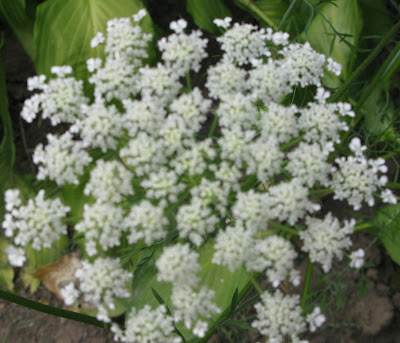
Rudbeckia - Goldsturm
- attracts butterflies - starts blooming in July. Prefers full sun and well drained soil. Best placement is in tall borders and flower beds.

Cardinalis - Morning Glory
Vigorous climbing vine. Can be trained on poles, trellises and fences.
Annual plant. Likes full sun. Can grow to 12' high. This particular flower is small and dainty.
Place of origin was Mexico and Arizona - introduced into Europe in 1769.
Propagation by seed in Spring.
Easter Lily - Lilium longiflorum
This flower is forced for Spring blooms and is popular during the Easter season. However, it normally blooms during the summer. I have several in my garden that were about to be discarded by various people after Easter - I planted them and now they are happily blooming in the middle of July. They originated in Japan and were grown and naturalized in China. Introduced to Europe in 1819.
These are doing well in the full sun.

Russian Sage - Perovskia atriplicifolia
Blooms midsummer to early fall. Loves full sun.
This perennial grows 3 - 4 feet high and is hardy in Zones 5 - 9
Has an aromatic flower that is beautiful with day lilies and phlox.
This photo shows the new fence that we built last week.

Cleome Spinosa (annual)
Great for border backgrounds or cutting.
Attracts butterflies. Cleome loves the sun and grows 3-4 feet high.
They have long (2-3 inches) extruding stamens.
Propagation by seed in early spring.

Queen -Anne's -Lace
This flower forms only roots and a rosette of leaves the first year, then they flower and set seed the second year. This is actually a biennial, perennial weed. Yes, this beautiful flower has been designated a weed because it it is fast, tough and invasive. I usually pull up those found in the flower beds but I love them alongside the border of plantain and day lilies.
How could one just discard them :-)
Hint: they are great for drying at the end of the season. Place the stems through a screen, such as 1/4" hardware cloth. the stems hang loose below, and the flowers are supported face up by the screen.


No comments:
Post a Comment